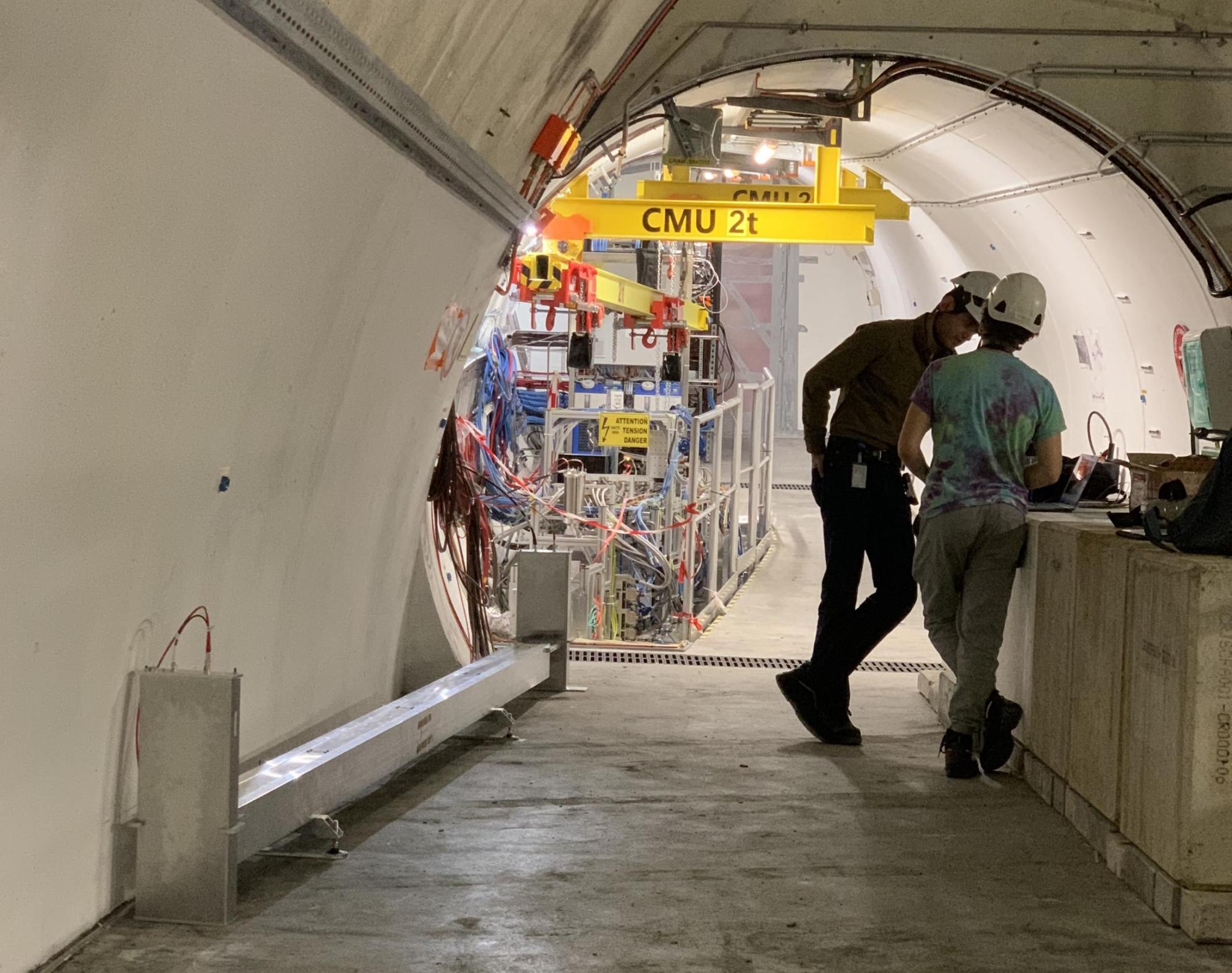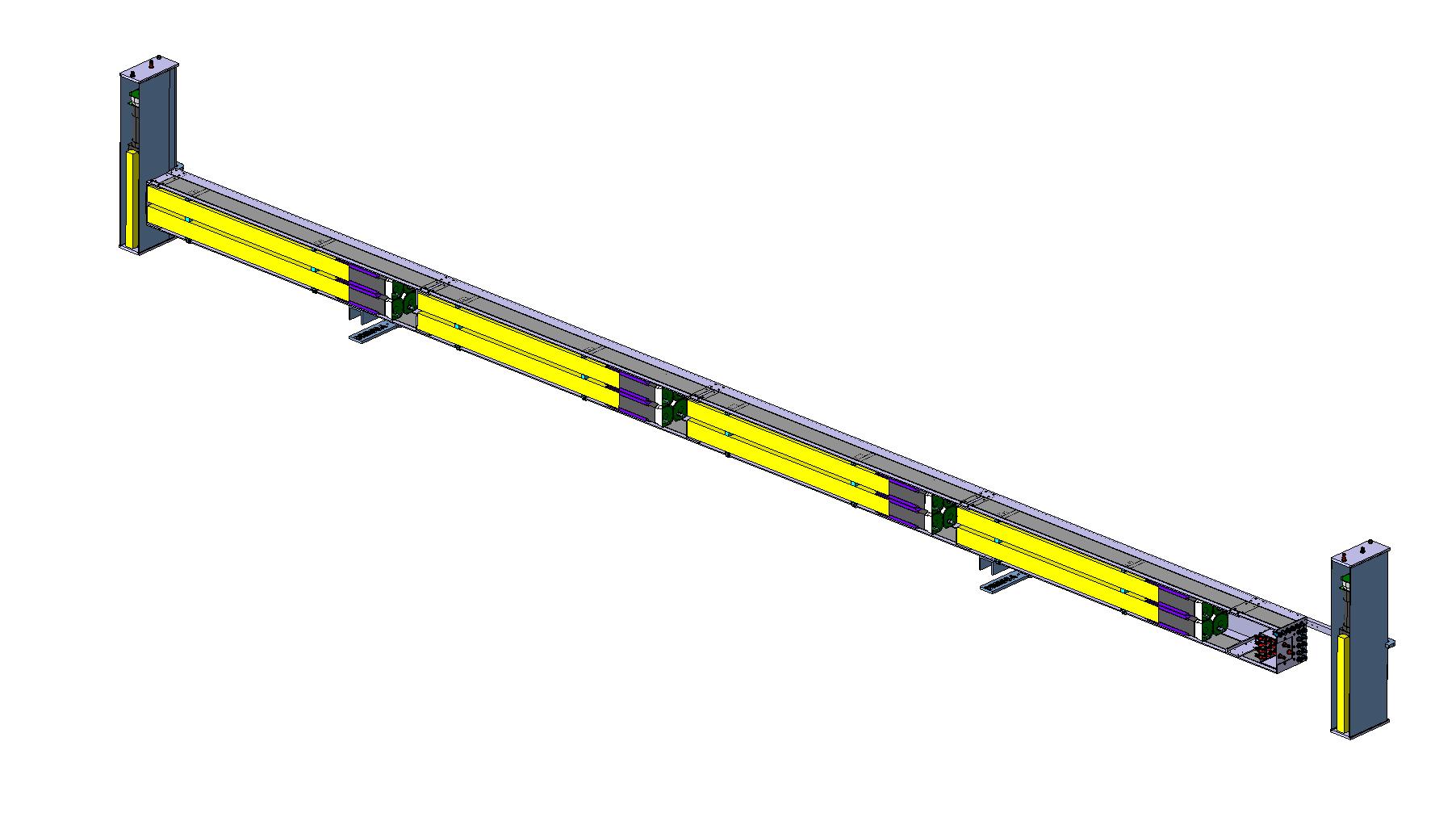A millicharged particle detector
FORMOSA is a particle detector aimed at searching for theoretical particles with an electric charge less than that of an electron. These particles are predicted to have a charge somewhere between 10% and 0.1% that of the electron. Borrowing from its sister-experiment MilliQan, FORMOSA utilizes plastic scintillator bars coupled to photomultiplier tubes (PMTs) to search for signals indicative of the existence of such millicharges. Currently, a FORMOSA "demonstrator" is at the Large Hadron Collider (LHC) at CERN to prove the viability of such an experiment. This location was chosen because it is in the "forward region" of the ATLAS detector, where millicharged particles are predicted to be produced in abundance. The FORMOSA demonstrator is led by Prof Matthew Citron at UC Davis and was constructed and installed by a team of researchers from UC Davis.
Glimpsing into the dark sector
The FORMOSA detector is critical in our search for answers to explain why our universe is largely dominated by dark matter. Many theories predict not a single DM particle but a full "Dark Sector" that can be as complex in its particles and interactions as the known universe. Such theories predict millicharged particles in the case that the photon "mixes" with a massless “dark photon.” Discovering such a phenomenon would be a huge leap in our ability to probe and understand dark matter. It would provide a “portal” into the dark sector of particles. The FORMOSA detector provides a unique opportunity to gain sensitivity to the production of such particles at the LHC.
Achieving sensitivity
As with any particle detector, the design of this demonstrator is largely informed by our predicted signals and backgrounds. The Bethe-Bloch formula tells us that particles with a low charge (e.g. millicharges) will tend to deposit less energy as they travel through materials (proportional to the charge squared). Thus the demonstrator uses multiple layers of long plastic scintillator bars to increase the likelihood of millicharged particles depositing energy in them. A signal event would have energy deposits in each of these layers. Yet, muons form a critical background that challenges our ability to identify these signals. These are produced in abundance (~1/cm2/s) by LHC collisions at ATLAS and make it to the detector. We often call these "through-going" or "beam" muons. Through-going muons tend to be high-energy and deposit much of that energy in plastic scintillator. Thus, FORMOSA utilizes thin scintillator panels at the front and back of the detector in order to reject this background. Such a design is based on core physics principles and technologies that are well-proven and rather cheap to utilize.



